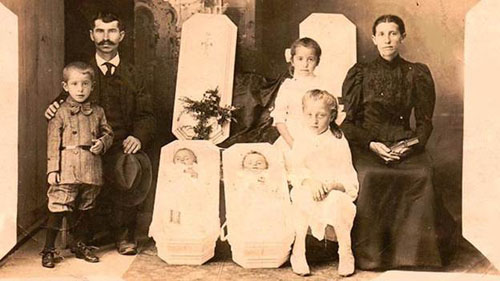Mourning photography
Mourning photography, also known as post-mortem or memorial photography, was at the peak of its popularity in the late 19th and early 20th century. Today, however, as more and more people examine our societal reactions to mourning, the Victorian photographs are making a comeback and require the expertise of professionals to determine the authenticity of early mourning images. Florida Antiues Appraisers employ a team of researchers and art professionals that thoroughly research and authenticate the mourning photography in your collection.
Beginning in 1839 with the development of the daguerreotype, Mourning Photography gained in popularity through its ability to affordably memorialize deceased loved ones, particularly children and infants due to the high infant mortality rate at the time.
While the Mourning Photograph positioning has changed over time, from posing the loved ones as if they were sleeping to the later, more ornate images in coffins, so has the medium. Throughout the height of its popularity, photographers used glass plate negatives, tin types and ambrotypes that allowed them to add color to the image. Today, this practice of documenting the deceased is still used in Eastern Europe and is experiencing a revival in the United States.
Contact us now for more information about having your photograph appraised.
